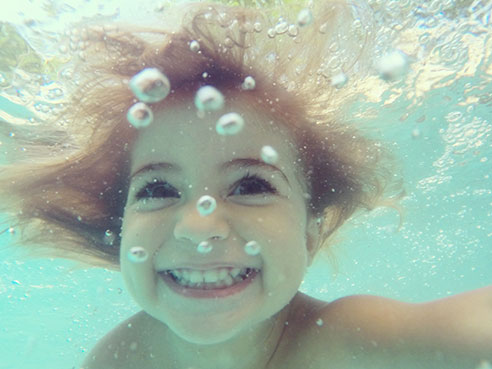 Drowning is the leading cause of injury-related death among children ages 1 to 4, according to the Centers for Disease Control and Prevention.
Drowning is the leading cause of injury-related death among children ages 1 to 4, according to the Centers for Disease Control and Prevention.
“Families seem to be spending time around water this time of year, so it is important to remind ourselves of the basics of water safety,” said Michelle Fanucchi, Ph.D., chair of the University of Alabama at Birmingham School of Public Health Department of Environmental Health Sciences. “It is easy to become complacent when it comes to water safety. Being aware of the dangers of water and reminding our children of basic guidelines may help prevent an accident from occurring.”
As families head to the lake, pool and beaches, Fanucchi says never let children out of sight when around water. Designate a parent or responsible adult to serve as the lifeguard at all times.
“Most recreational swimming areas do not have a lifeguard on duty. It’s easy to think that someone else is watching, so selecting an adult to be the designated lifeguard ensures the children are being watched at all times,” Fanucchi said.
Children need adult supervision when in the water. Fanucchi recommends that parents stay close enough to their children to rescue them in case of an incident.
Teach children to swim. The UAB Rec Center offers swim lessons to children of all ages. According to Fanucchi, aquatic programs for infants and toddlers teach children how to enjoy the water and help to teach parents about water safety.
| Teach children to swim. The UAB Rec Center offers swim lessons to children of all ages. According to Fanucchi, aquatic programs for infants and toddlers teach children how to enjoy the water and help to teach parents about water safety. |
The best practice is to have everyone, but especially children, wear a life jacket when on a boat. As boats are unpredictable, kids may not have the presence of mind to slip into a life jacket in an emergency.
“If a child or adult is unable to swim, unaware of their surroundings or incapable of handling shock in a situation, they should have a life jacket on,” Fanucchi said.
She also reminds all swimmers to be careful and mindful of rip tides when swimming in the ocean. Children should know how to swim out of the rip tide. Swimming perpendicular to, not against the current, should get the swimmer safely out of the rip tide.
Sunscreen should be applied regularly. The label will suggest a time limit. However, if in the water or sweating, apply more often. Additionally, protect children’s eyes with a hat and sunglasses.
“When it comes to sunscreen, you can never apply too much. Each time you get out of the water, it is recommended that you reapply,” Fanucchi said.